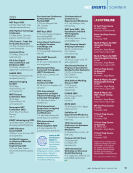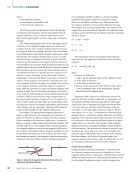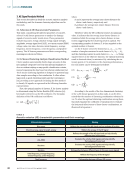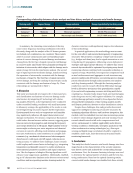Ravan, M., R. K. Amineh, S. Koziel, N. K. Nikolova, and J. P. Reilly. 2010.
“Sizing of 3-D Arbitrary Defects Using Magnetic Flux Leakage Measure-
ments.” IEEE Transactions on Magnetics 46 (4): 1024–33. https://doi.
org/10.1109/TMAG.2009.2037008.
Shaoxuan, Z., J. Feng, S. Lu, and X. Dong. 2023. “A novel MFL detection
method based on low frequency AC magnetization for identification
defect.” Journal of Magnetism and Magnetic Materials 580: 170864. https://
doi.org/10.1016/j.jmmm.2023.170864.
Sun, Y., and Y. Kang. 2010. “A new MFL principle and method based on
near-zero background magnetic field.” NDT &E International 43 (4):
348–53. https://doi.org/10.1016/j.ndteint.2010.01.005.
Szalay, V. 2017. “Eckart ro-vibrational Hamiltonians via the gateway
Hamilton operator: Theory and practice.” Journal of Chemical Physics 146
(12): 124107. https://doi.org/10.1063/1.4978686.
Yi, J., P. G.-P. Piau, A. de Lustrac, and S. N. Burokur. 2016. “Electromag-
netic field tapering using all-dielectric gradient index materials.” Scientific
Reports 6 (1): 30661. https://doi.org/10.1038/srep30661.
Yu, G., J. Liu, H. Zhang, and C. Liu. 2020. “An Iterative Stacking Method
for Pipeline Defect Inversion with Complex MFL Signals.” IEEE Transac-
tions on Instrumentation and Measurement 69 (6): 3780–3788. https://doi.
org/10.1109/TIM.2019.2933171.
Zharinov, V. V. 2017. “Hamiltonian operators in differential algebras.” Theo-
retical and Mathematical Physics 193 (3): 1725–36. https://doi.org/10.1134/
S0040577917120017.
ZhongCai, Y., S. JiaMing, W. JiaChun, and Z. DaPeng. 2015. “Investigation
on electromagnetic field refraction of inhomogeneous plasma cylinder.”
Journal of Plasma Physics 81 (2): 905810211. https://doi.org/10.1017/
S0022377814000166.
ME
|
MAGNETICLEAKAGE
40
M AT E R I A L S E V A L U AT I O N • M AY 2 0 2 5
“Sizing of 3-D Arbitrary Defects Using Magnetic Flux Leakage Measure-
ments.” IEEE Transactions on Magnetics 46 (4): 1024–33. https://doi.
org/10.1109/TMAG.2009.2037008.
Shaoxuan, Z., J. Feng, S. Lu, and X. Dong. 2023. “A novel MFL detection
method based on low frequency AC magnetization for identification
defect.” Journal of Magnetism and Magnetic Materials 580: 170864. https://
doi.org/10.1016/j.jmmm.2023.170864.
Sun, Y., and Y. Kang. 2010. “A new MFL principle and method based on
near-zero background magnetic field.” NDT &E International 43 (4):
348–53. https://doi.org/10.1016/j.ndteint.2010.01.005.
Szalay, V. 2017. “Eckart ro-vibrational Hamiltonians via the gateway
Hamilton operator: Theory and practice.” Journal of Chemical Physics 146
(12): 124107. https://doi.org/10.1063/1.4978686.
Yi, J., P. G.-P. Piau, A. de Lustrac, and S. N. Burokur. 2016. “Electromag-
netic field tapering using all-dielectric gradient index materials.” Scientific
Reports 6 (1): 30661. https://doi.org/10.1038/srep30661.
Yu, G., J. Liu, H. Zhang, and C. Liu. 2020. “An Iterative Stacking Method
for Pipeline Defect Inversion with Complex MFL Signals.” IEEE Transac-
tions on Instrumentation and Measurement 69 (6): 3780–3788. https://doi.
org/10.1109/TIM.2019.2933171.
Zharinov, V. V. 2017. “Hamiltonian operators in differential algebras.” Theo-
retical and Mathematical Physics 193 (3): 1725–36. https://doi.org/10.1134/
S0040577917120017.
ZhongCai, Y., S. JiaMing, W. JiaChun, and Z. DaPeng. 2015. “Investigation
on electromagnetic field refraction of inhomogeneous plasma cylinder.”
Journal of Plasma Physics 81 (2): 905810211. https://doi.org/10.1017/
S0022377814000166.
ME
|
MAGNETICLEAKAGE
40
M AT E R I A L S E V A L U AT I O N • M AY 2 0 2 5













































































